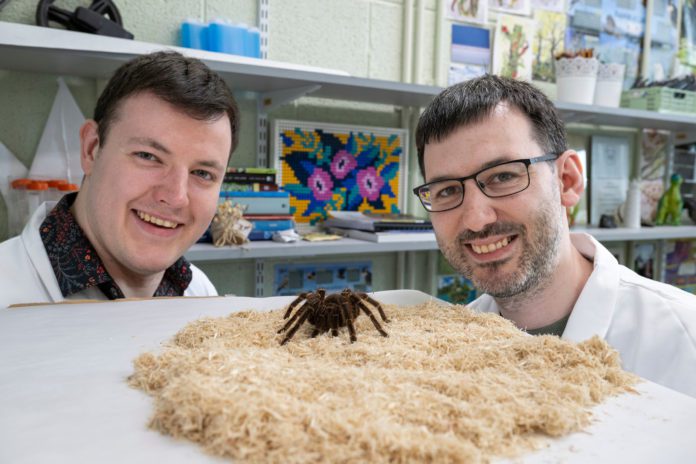A new study by researchers at the University of Galway’s School of Natural Sciences has revealed why some spiders possess venom that is far more potent than others.
By analysing the venoms of more than 70 different spider species, the team explored whether factors such as body size, prey type, and hunting method, including the use of webs, could explain the wide variation in venom strength.
The research was published today in the journal Biology Letters.
While spiders are infamous for many things like their eight spindly legs, sticky webs, and most notably, their venomous bites, the actual effects can vary dramatically depending on the species.
For instance, a bite from the Brazilian wandering spider can result in serious medical complications, whereas the venom of a giant house spider typically poses no threat to humans, raising the question, what drives such differences in venom potency?
The researchers discovered that diet is one of the most important drivers influencing the potency of spider venom.
They found that spider venoms are what is called prey-specific, meaning if a spider primarily hunts insects, its venom is likely to be particularly effective at killing insects in general, such as crickets and flies, but far less effective against other non-insect prey, like small mammals.

Lead author Dr Keith Lyons from University of Galway’s School of Natural Sciences said, “Our results show that spider venoms have evolved to be especially potent when tested on animals found in their diet in the wild.”
“This may explain why species that are known to occasionally prey upon small mammals, such as the Brazilian wandering spider or Black widow, have venoms that can cause medically significant effects in us humans, whereas species that only prey on invertebrates, such as the Giant house spider, have evolved venoms that target invertebrate physiologies rather than our own, posing little threat to us.”
The researchers also tested whether the use of webs to capture prey was related to the potency or volume of a spider’s venom.
Dr Kevin Healy, Senior author and Head of the Macroecology lab at the University’s School of Natural Sciences, said: “We predicted that web-hunting spiders might have less potent venoms because they may have evolved to rely more on their webs to immobilise prey.”
“Surprisingly, we found no relationship between whether a spider used their web and the potency of their venom, suggesting that webs are likely important for restraining prey in web-hunters, regardless of how deadly their venom is.”
“This study helps us to understand the evolution of spider venoms and aids in our understanding of why some spiders, such as the Noble False widow become invasive species in some parts of the world, or how some venoms may be of particular interest for future drug discovery, or the development of pest species-specific, pollinator-friendly insecticides.”













